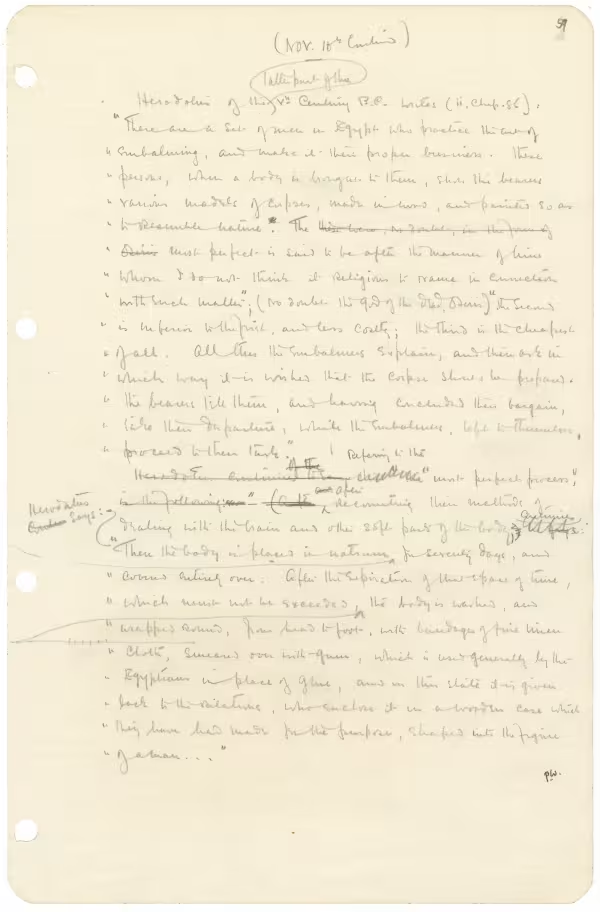TAA i.2.3.59
Includes notes from previous page.
Percy White ("P.W.") has reviewed this page and initialled it.

© Griffith Institute,
University of Oxford
(Nov. 10th Continued)
Herodotus of the <latter part of the> Vth Century B.C. writes (ii, Chap. 86):
"There are a set of men in Egypt who practise the art of
"embalming, and make it their proper business. These
"persons, when a body is brought to them, show the bearers
"various models of corpses, made in wood, and painted so as
"to resemble nature." The these were, no doubt, in the form of
"Osiris most perfect is said to be after the manner of him
"whom I do not think it religious to name in connection
"with such matter<">; (no doubt the god of the dead, Osiris). "The Second
"is inferior to the first, and less costly; the third is the cheapest
"of all. All this the embalmers explain, and then ask in
"which way it is wished that the corpse should be prepared.
"The bearers tell them, and having concluded their bargain,
"take their departure, while the embalmers, left to themselves,
"proceed to their task."
Herodotus continues <of the> to say this ??? the <Referring to the> "most perfect process",is the following: ???" - (after <and after> recounting their methods of
dealing with the brain and other soft parts of the body,) the body <continues>:
<Herodotus contin says: -> "Then the body is placed in natron, <a natural soda from the natron lakes in the Lybiansic
desert, <very> probably <such as the lake of> Wâdi Natrûn> for seventy days, and
"covered entirely over. After the expiration of that space of time,
"which must not be exceeded, <for al risk of the natron eating into the flesh>, the body is washed, and
"wrapped round, from head to foot, with bandages of fine linen
<" " ">
"cloth, smeared over with gum, which is used generally by the
"Egyptians in place of glue, and in this state it is given
"back to the relations, who enclose it in a wooden case which
"they have had made for the purpose, shaped into the figure
"of a man …"
P.W. {Percy White}